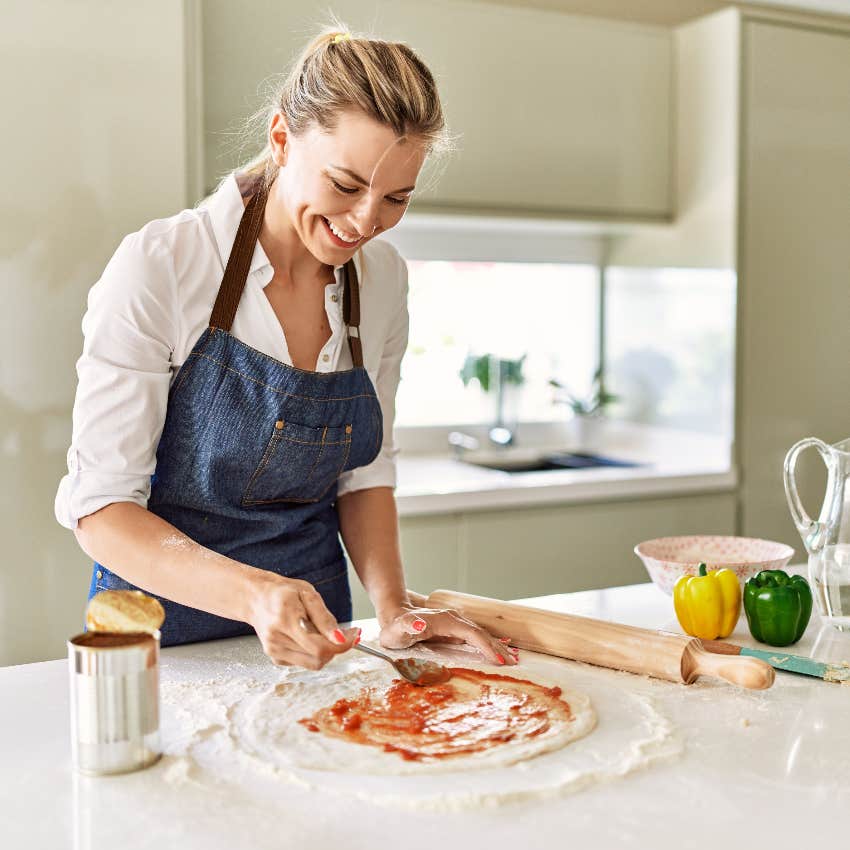'Inflation Math' Is Changing The Way People Eat
American eating habits are responding to rising prices.
 BongkarnGraphic | Shutterstock
BongkarnGraphic | Shutterstock We’ve heard of girl math and girl dinner. Now, there’s a new formula affecting how we live our day-to-day lives. NPR reported that rising prices at restaurants are leading more people to dine at home.
‘Inflation math’ is changing the way people eat.
The cost of eating a meal at a restaurant has gone up by 4.1% over the past year. Grocery prices have increased, too, but by a significantly smaller percentage: 1.1%.
Since 2020, the cost of groceries has gone up by 19% while restaurant prices have gone up by 24%.
Americans are affected by these rising costs, and they’re choosing to make more frugal decisions. People are cutting back on eating at restaurants and putting the money they save toward their grocery bill.
 STEKLO | Shutterstock
STEKLO | Shutterstock
It’s not just fancy, sit-down restaurants that are losing customers. Fast-food restaurants are taking a hit, as well.
McDonald’s had their first decline in sales since restaurants closed completely in 2020, falling by almost 1% between April and June of 2024.
The shift in Americans’ consumption patterns has fast food places reimagining their marketing strategies. McDonald’s has extended the length of their $5 value meal through the summer in hopes of winning back customers who’ve made the switch to eating at home.
 Monkey Business Images | Shutterstock
Monkey Business Images | Shutterstock
The CEO of Denny’s, Kelli Valade, touched on the impact restaurant inflation has had on people’s spending, explaining, “We definitely feel like people are probably still saying, 'I should just cook at home a little bit more often.'"
Grocery stores are selling more food, while cafes and restaurants are selling less.
Restaurant owner Brian Will gave his perspective on price hikes, breaking down all of his costs that lead to $16 sandwiches.
“My rent is $20,000 a month. My utilities are $6,000 a month, and my labor’s currently running about $60,000 a month, that’s at 28%,” he said. “So, I’m in for $86,000 a month before I sell a single sandwich.”
“At a 32% food cost, I have about $11 profit in that sandwich,” he continued. “That means I have to sell 93,800 sandwiches a year, or 257 a day, just to break even and make no money.”
“That’s why your sandwich costs so much,” Will concluded. “That’s a reflection on our economy.”
It’s not that groceries aren’t expensive; they’re just less expensive than a restaurant meal.
Increased prices coupled with stagnant wages mean that people are more picky about what they can and can’t afford. Americans are rethinking where they want to spend their money, and more people have decided to focus their income on groceries and cooking for themselves.
Cooking at home saves people money initially, and it creates continued savings, as they can cook up a big batch of food to their liking and eat leftovers later.
 Krakenimages.com | Shutterstock
Krakenimages.com | Shutterstock
NPR cited data from a market research firm, Circana, which found that some people are cutting costs by buying store brands, while other people are letting themselves have at least some nice things by spending their extra dollars on higher-priced items.
Shoppers are splurging on three specific items by upgrading their wine choices, along with pasta sauce and pizza dough. While spending habits might be changing, America’s appetite for the culinary perfection that is pizza has stayed the same.
Our consumption style reflects the economic state we’re in, and judging by the downward trend in eating out, people are tightening their wallets wherever they can.
Alexandra Blogier is a writer on YourTango's news and entertainment team. She covers social issues, pop culture, and all things to do with the entertainment industry.
